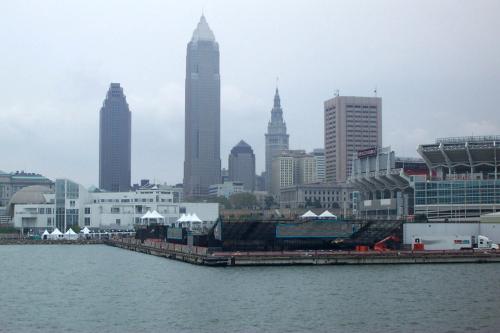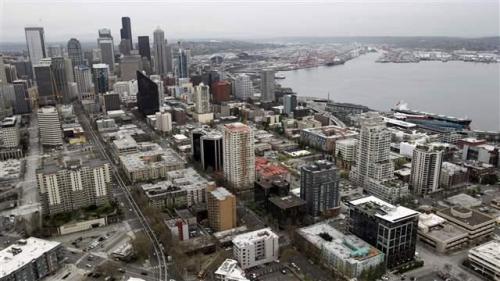The Metropolitan Revolution stresses the essential role strong core cities need play in sustaining a region’s economic growth. Job growth in northeast Ohio continues to disperse away from central business districts. Sadly, entire neighborhoods have experienced little of our region’s nascent recovery.
To address these gaps, the Fund for Our Economic Future, a philanthropic collaboration, is renewing its commitment and refining its work toward a future where all people, not just some, benefit from our region’s prosperity. In this approach, core cities will not be left behind.
Fund members, who represent nearly 50 foundations and institutions in and around Cleveland, Akron, Youngstown, and Canton, see this as an economic imperative as much as an ethical one. Northeast Ohio—like much of the country—faces serious inequality issues that threaten to stall our growth. By ensuring that our core cities see the benefits of economic growth, we will help alleviate inequality and make our positive momentum more sustainable.
Late last year, the fund issued a call to action to leaders in the public, private, and civic sectors in greater Northeast Ohio. We hope to gain their support in adopting a set of strategies that simultaneously address job creation, job preparation and job access. These three components make up the fund’s formula for a stronger, more sustainable economy, which we call “Growth and Opportunity.” The fund believes that these strategies must be intertwined to be successful, and they must also bind local communities—particularly those that have been left behind—to the larger regional economy.
The fund does this by bringing its growth and opportunity approach to the local level in ways that can serve as a model throughout the region. Two significant community-based efforts underway are:
- In Summit County, the fund worked with community leaders to support an assessment of its talent development system, and is now helping leaders to implement the recommendations for improvement. The fund is also supporting the collaborative development of a pilot program that will expand the region’s talent pool. Educators, companies, workforce entities, and community leaders are working together to create additional tools to identify job candidates with the appropriate skills, among other efforts.
- In Cuyahoga County, the fund is engaged with the Opportunity Corridor, a $330 million road that will be constructed through some of Cleveland’s most distressed neighborhoods. The project encompasses 350+ acres of vacant and underutilized land, but the spillover effect has the potential to reach more than 120,000 residents living on 1,000 acres of land. We believe the land can be redeveloped in ways that—if done strategically—have the potential to bring thousands of jobs to nearby residents. The labor force participation rates in the economically distressed areas surrounding the Corridor are nearly 30 percent lower than the regional average. The fund is working with partners throughout the community to ensure the support of job creation, job preparation and job access efforts surrounding the corridor.
The growth and opportunity agenda is challenging the fund to reconsider how it defines success. Over the past decade, the fund has measured its effectiveness using traditional indicators of economic growth, including increases in jobs, payroll, and capital. To gauge whether its efforts were inclusive, it also tracked these indicators for minority business enterprises (MBEs)/minority-led businesses (MLBs)—no matter where they were located, whom they employed, or the quality of jobs that were created. These measures did not fully take into account whether the strategies the fund supported resulted in both economic growth and equitable access to opportunity. To address this, the fund is adding an indicator—labor force participation in economically distressed neighborhoods—as a way to better reflect both racial and economic inclusion, while continuing to track economic growth.
The Metropolitan Revolution established the many ways in which metropolitan areas are the new centers of power in the United States. In the year since the book was published, the Fund for Our Economic Future has sought to forge shared goals among our region’s leaders in the public, private, and civic sectors. We have worked directly with communities across the state to bolster local economic development within the paradigm of our larger vision. And we have sought to create the most accurate measures possible to evaluate our effectiveness. We look forward to sharing our progress in the years to come.





Commentary
Growth and opportunity: Northeast Ohio’s imperative
March 18, 2015